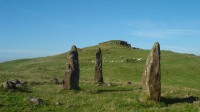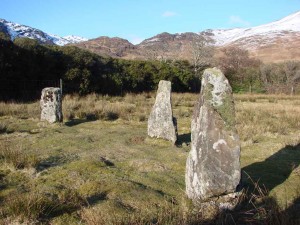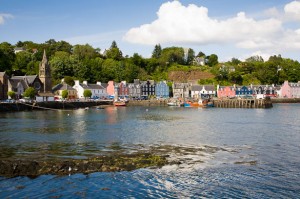History of the Isle of mull.
The History of the Isle of Mull is long and varied.Mull and its islands have been continually inhabited since just after the Ice Age. C. 6500 – 3500 BC. Mesolithic hunter-gatherers lived in caves such as Livingston’s cave on Ulva. C. 4000 – 2000 BC. Neolithic farmers people lived here leaving behind burial cairns and stone axes. C. 2500 – 600 BC.
Bronze age ‘Beaker’ people lived on Mull, their burial cairns, cists, standing stones, stone circles, and corded beaker pottery and knife blades record their existence. C. 600 BC – c. AD 400 Iron Age people built forts, brochs, duns, and crannogs, numerous defensive settlements on these islands.

The early Christian period began in the 5th Century, with 563 noted for the arrival from Ireland of St Columba.
Viking times started in 795 when Iona was first sacked, raids continuing for several centuries. Vikings eventually became settlers in the isles. The Middle Ages saw the construction of castles such as Moy and Duart, and chapels such as Pennygown. The clans were, Maclean, MacLaine, MacKinnon, Macquarie, and MacDonald. During the 17th to 19th centuries, clan chiefs and other lairds built ‘big’ houses, whilst the majority of islanders lived in tiny black houses in small townships, occupying shielings in the summer months.
In 1788 Tobermory was built by the British Fisheries Society, as a planned settlement. Over the centuries Mull’s population increased to over 10,000 in 1831 but first the Potato Famine and then the Clearances rapidly reduced this number. By the 20th Century much of the population had emigrated and there were more sheep on Mull than people.
Today Mull and its neighbouring islands have a population of nearly 3000. Farming, fishing and forestry used to be the economic mainstays of the island, but increasingly today, tourism is responsible for much of the island economy.
Many of the population are Macleans, MacLaines, MacKinnons, Macquarries and MacDonalds, descendants of Mull’s ancient clans and people from all over the world come to see where there ancestors came from, and I think most will agree its a wonderful place . Over the years Scots from almost every other clan have moved to Mull, as well as others, and so the population today is a mixture of true ‘Muileach’ and ‘incomers ’from all over the world who all agree that Mull!is a fantastic place to live and holiday. So if you want to part of the history of the Isle of Mull visit www.hartofmull.co.uk and start your holiday history.




